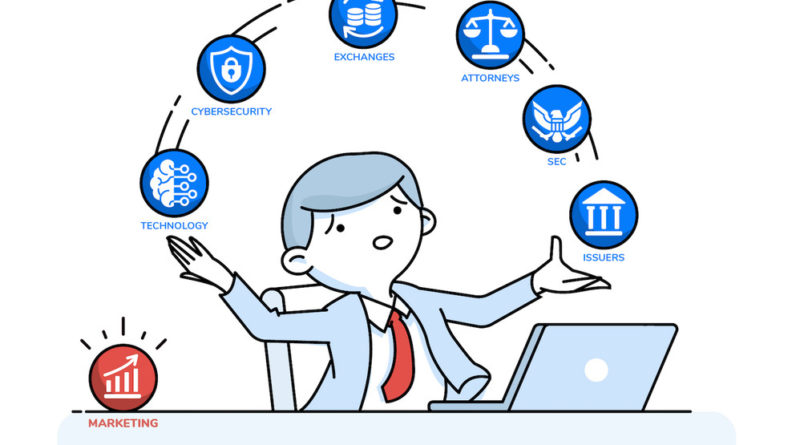Marketing for Digital Securities
2019 will be the year of the Digital Security.
With the launch of the first regulated securities token exchange, many companies will rush towards tokenization of their assets instead of undertaking a traditional IPO. The “digital IPO” will integrate blockchain technology (i.e., cryptographically secure distributed ledgers) with existing financial and market processes to increase transparency and efficiency while reducing settlement time and costs. Issuers will also benefit from a wider, truly global investor base and 24/7 trading. Liquidity for all digitized assets could improve, including for traditionally illiquid asset classes such as real estate or VC funds. In time, we expect investors will respond positively to the opportunity to diversify their portfolios.
Going the route of issuing digital securities is something many companies should consider, as it might be the most efficient solution to their capital market needs. The question then is – how do companies navigate the processes from tokenization to issuance, to listing and trading, to creating and sustaining liquidity?
Jeff Ramson, our CEO, recently published an article on the importance of building liquidity — “Digital Securities: Public or Private?” — for the purposes of this post, I will focus on marketing.
While in the midst of issuing digital securities, marketing might be the last thing companies think about. And understandably so, given the immediate pressing needs to deal with attorneys, build new technology, enlist numerous finance professionals, select issuance partners, negotiate with exchanges, tighten up cybersecurity, and let’s not forget registering with the SEC… all endeavors that require significant capital, focus, time, and determination.
Ok, let’s assume you get through all that and voilà – your security is trading on tZero or Templum, or any other legitimate exchange.
Now what?
What’s your trading volume? Who’s buying your tokens? Do your investors really get the liquidity you promised? How do you create secondary market liquidity?
Marketing for digital securities does exactly what marketing does for everything else: creates a market. However, the days of “build it and they will come” are long gone; you can issue tokens but no one will come to buy them if you don’t think about marketing from Day 1.
Our suggestions are to work backwards and think about who you want to attract and how, then build a detailed investor profile and align everything to the pursuit of that profile. Generating a vast database of investors and followers, and managing an ongoing open dialogue with that database, is one of the most important investments you can make as a business. And don’t neglect the specifics of this new digital arena as mentioned above: a new global pool of investors, 24/7 trading, cybersecurity issues, need for widespread awareness, trust and transparency.
Creating a digital security marketing plan needs to encompass the entire journey the company will take. This includes all the nitty-gritty details that need to be researched and planned for, such as geographic location of investors, potential currency fluctuations, and international tax laws. For example, if your ideal investor is a technology savvy individual living in Europe or Asia, the methodology and messages used to reach that investor are very different from selling a real-estate backed security to domestic wealth managers. Similarly, if you can verify the actual asset underlying your digital security, you have a much better chance to ultimately attract institutional investors.
Creating awareness, targeting and building the right (and largest) audience, and community management should be among the first steps you take when digitizing your assets. Companies also need investor relations advisors (yes, even if you are a private company, you need IR) that really know the digital space, understand the various investor types and their needs, can navigate the space between digital exchanges, attorneys, investors and existing market institutions and operations, and who can help you to communicate your story efficiently to all parties involved.
This is the second of a series of articles on critical strategies for digital securities issuers. We will be posting more articles with ideas and suggestions; for more information please visit us at www.pcgadvisory.com.

